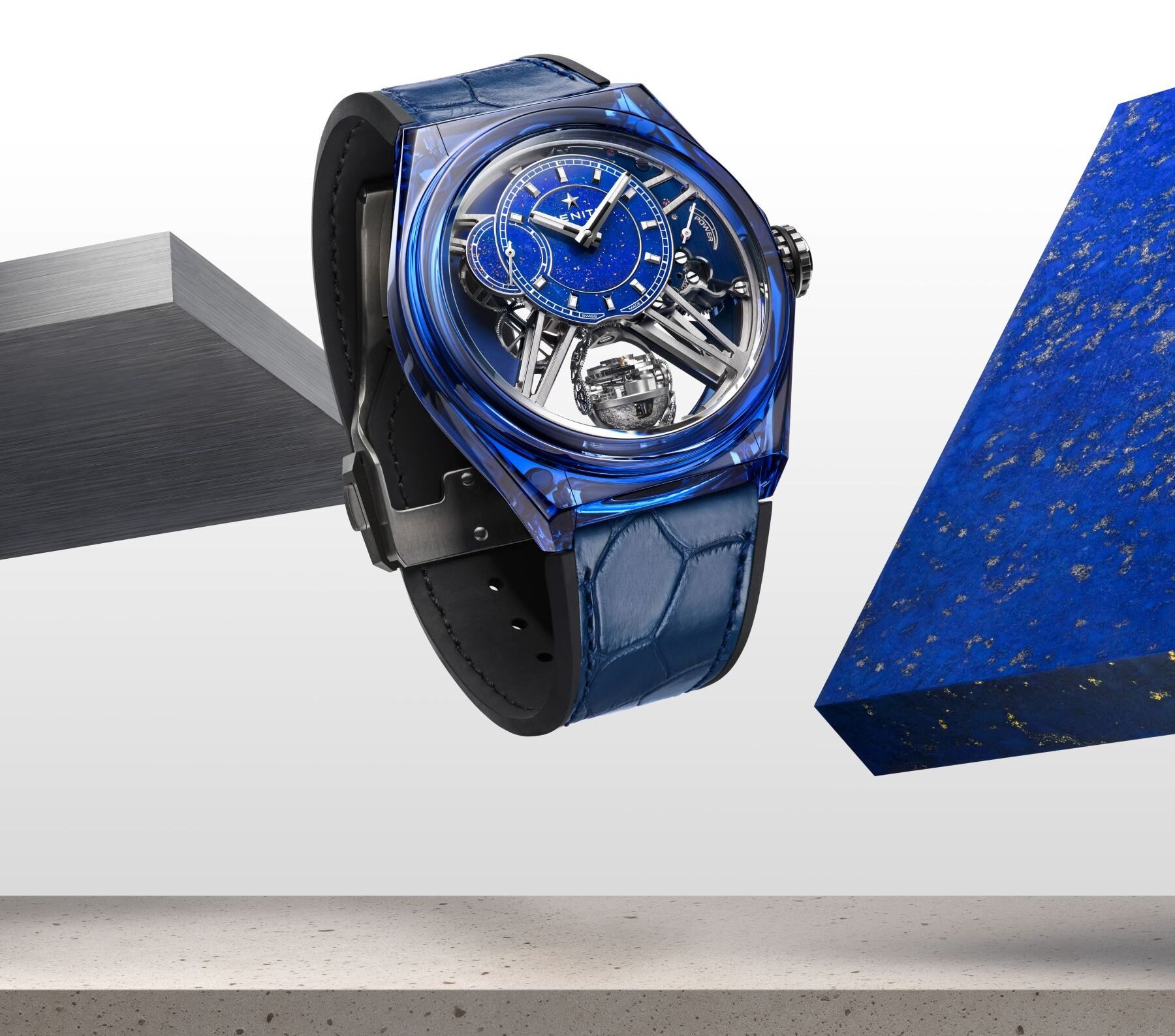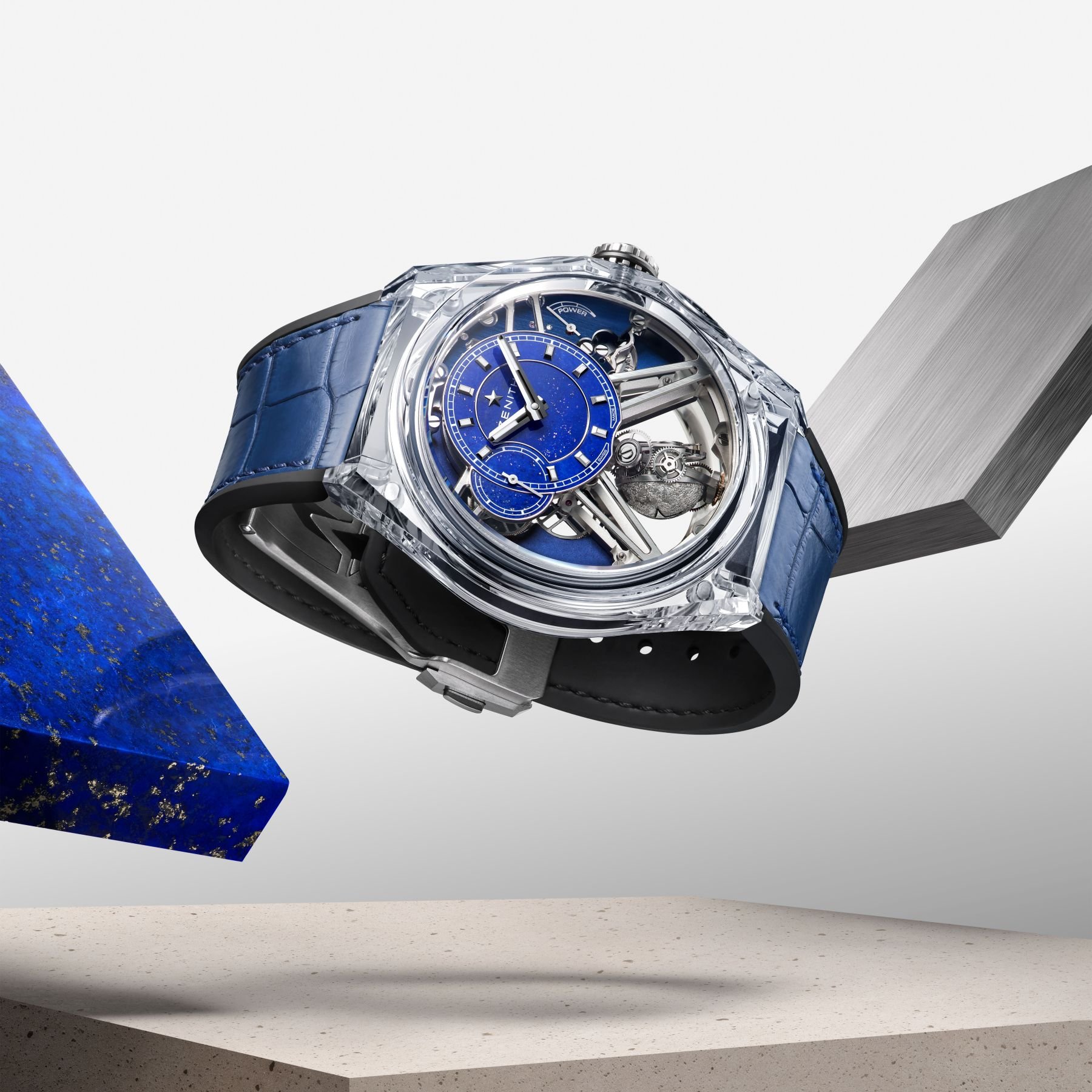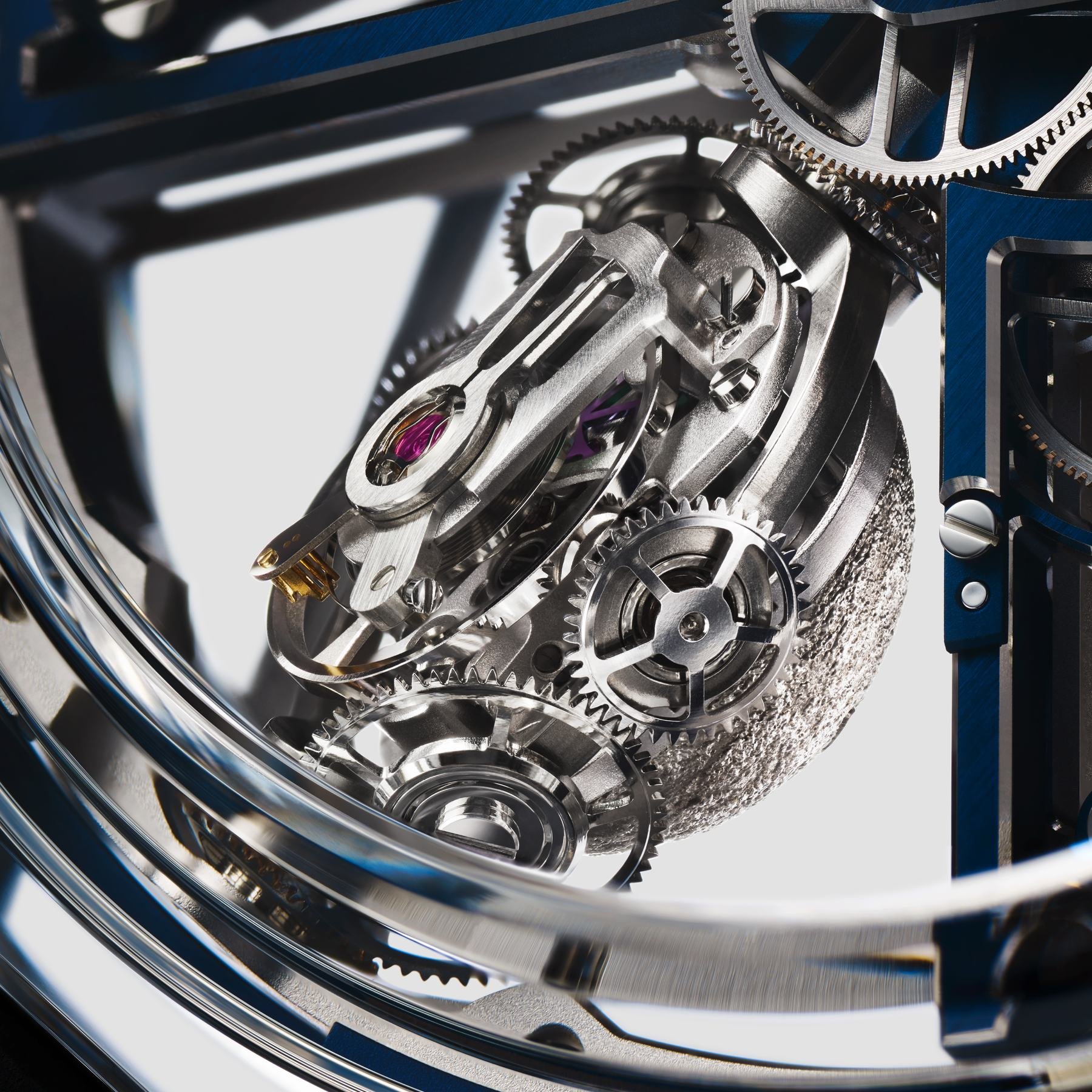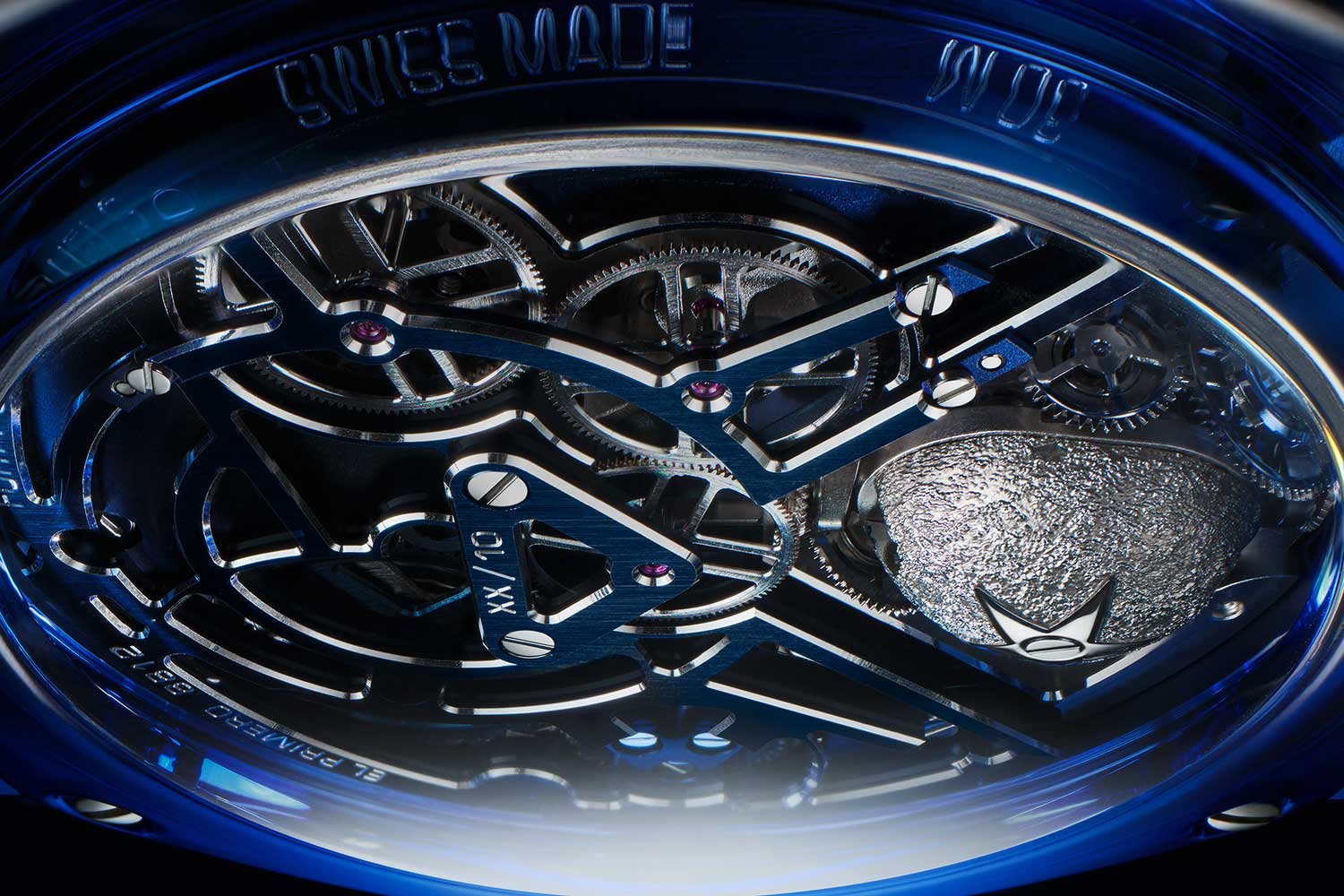Let me ask you a simple question: if you had to choose between a tourbillon and a Gravity Control System, which would you pick? Well, then again, you might require more information before answering my question since the system I mentioned might not be a household name. Therefore, let me introduce the gravity-defying Zenith Defy Zero G Sapphire, a watch that comes in either a 46mm transparent or blue sapphire case and uses the aforementioned Gravity Control System instead of a tourbillon to maximize the movement’s accuracy.
The most famous antigravity device in the horological world is, without a shadow of a doubt, the tourbillon. Since its invention by Abraham-Louis Breguet in 1801, some complicated variations on the theme have come out, including flying tourbillons, three-dimensionally spinning gyro tourbillons, as well as tilted and even vertically spinning ones. Other brands tried to use multiple tourbillons in one movement or four escapements to fend off that nasty phenomenon called gravity — I’m looking at you, Roger Dubuis. Zenith came up with something called the Gravity Control System. It sounds like something you would use in a manned space station, but it’s not. The system is based on historical marine chronometers placed on gimbals, and Zenith launched it in 2008. Since then, the brand’s watchmakers have compacted and refined the system. The current version, which debuted in 2018, is around two-thirds smaller in volume.
Zenith Defy Zero G Sapphire — It might look like one, but it’s not a tourbillon
So, you want to beat gravity but don’t want to use a complicated tourbillon… Just build an even more complex system — it’s that simple. It sounds simple if I tell you that the Gravity Control System takes the watch’s regulating organ and puts it on a miniature gimbal as an integrated part of the 5Hz El Primero 8812 caliber. But it isn’t. The level of miniaturization is astounding. A total of 139 tiny components, including nine non-magnetic, lubrication-free ceramic ball bearings, are squeezed into a 1.3cm³ (13.4mm × 10.9mm × 8.84mm) area. If you think a tourbillon is a mesmerizing construction expressing excellent technical skills, the Gravity Control System will blow you away.
How it works
The system works as follows. A conical system of bevel gears reroutes torque from the barrel to the escapement through the Gravity Control module. These bevel gears are housed within a miniature differential, allowing the rotation to be transmitted uniformly, no matter how the module tilts. This design guarantees that the escapement consistently receives a steady driving torque, thus improving accuracy.
I had the chance to play around with previous watches outfitted with the system years ago. It can assure you it’s mind-blowing to watch the tiny construction anticipate the movements you make. I didn’t bring any measuring equipment, so I can’t say anything about the accuracy of the movement outfitted with the system. Funnily and/or ironically, tourbillons and alternative systems are tangible outcomes of a watchmaker’s quest for accuracy. In the end, though, it’s all about the visual spectacle for the wearer.
Pick your sapphire
By now, I’m sure you know you want a watch with a Gravity Control System instead of a tourbillon. That means it’s time to pick the version. The two watches you can choose from are part of Zenith’s 160th-anniversary celebrations. Since its founding, Zenith has shown a strong commitment to advancing chronometry. The brand’s 2,333 chronometry awards are proof of that. Launching two Defy Zero G limited editions makes historical sense. However, releasing watches with 46mm cases crafted from blue and transparent sapphire is more futuristic. Both watches are limited editions of 10 pieces, each with a case middle, bezel, and back cut from blocks of scratch-resistant sapphire. Both cases offer an excellent view of the skeletonized, hand-wound El Primero 8812 caliber outfitted with a gimbal-mounted Gravity Control escapement module prominently positioned at 6 o’clock.
To keep it moderately classical, you read the hours, minutes, and small seconds on an offset lapis lazuli dial adorned with luminescent faceted hour markers. The stone’s deep blue surface, speckled with gold-toned pyrite, evokes the beauty of a star-studded night sky. Twenty of those pyrite dials will be made in total. And due to the stone’s natural variations, every watch is truly one of a kind.
Now, what’s it going to be — see-through or blue? Both watches cost €220,000 / US$207,500, so in the end, it’s only a matter of color, right?







